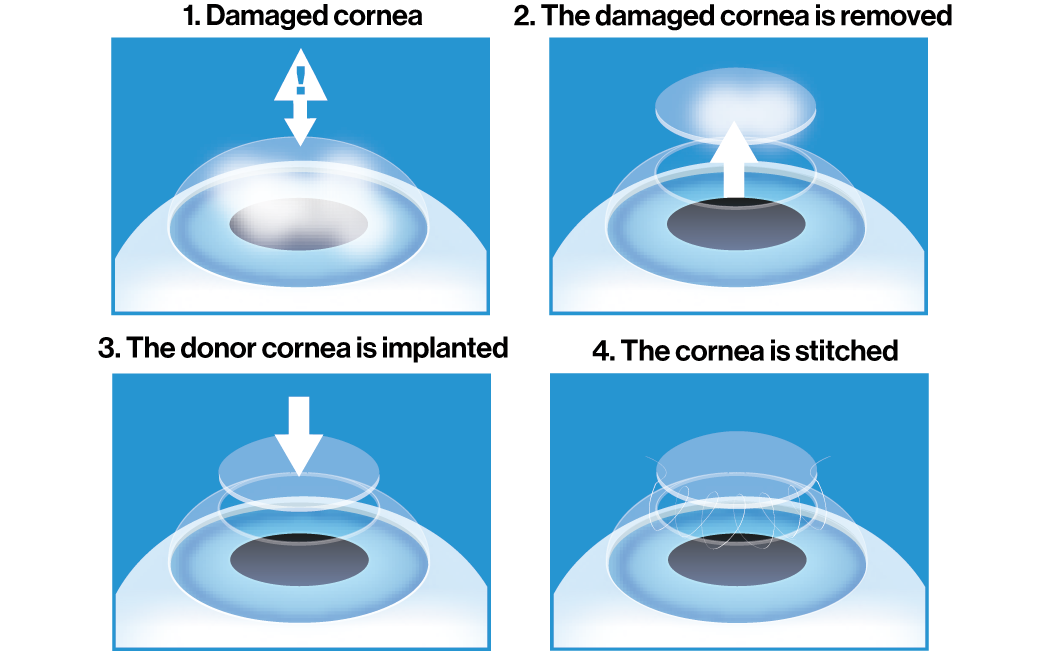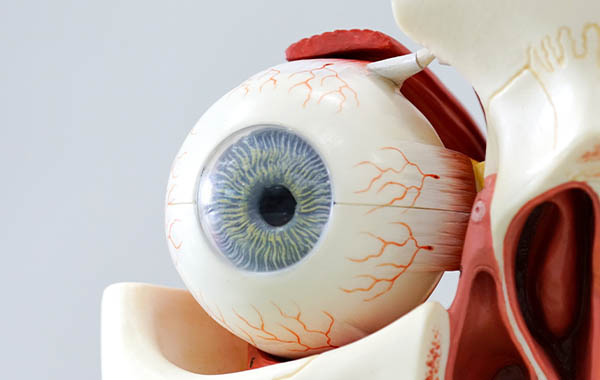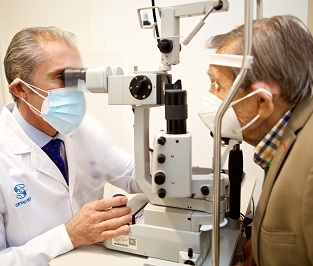Cornea and ocular surface / Corneal Transplant
What is a corneal transplant or keratoplasty?
A corneal transplant, or keratoplasty is a surgical procedure where we replace damaged corneal tissue with healthy corneal tissue from a donor, because the patient is suffering from visual deterioration or an irreversible corneal disorder that cannot be corrected in any other way. Corneal transplant surgery is one of the most common surgical procedures performed throughout the world.

How is a corneal transplant performed?
Types of surgery
There are various types of surgical procedures available at the Oftalvist Corneal Transplant Unit, which we will explain below:
Penetrating keratoplasty
This involves replacing the full thickness of the corner with a cornea from a donor. This is the most common type of corneal transplant.
Lamellar keratoplasty
Here we replace just the damaged piece of corneal tissue, but not the entire cornea. This type of procedure is less invasive than the aforementioned and usually presents less complications; the healing process is also easier and faster:
Deep anterior (DALK)
[Read more]
Posterior or endothelium (DSAEK, DMEK)
[Read more]
Benefits of a corneal transplant
The aim of this procedure is to recover transparency in the cornea, and thanks to the optimum results we can achieve with this surgery, we are able to improve the patient’s visual quality of life.
In cases where there is a risk of perforation, the goal is to avoid losing the eyeball and reduce any complications that this kind of situation could cause.

When is keratoplasty recommended?
It is the corneal specialist ophthalmologist who determines whether the patient is a suitable candidate or not for this surgery, after an exhaustive ophthalmological exam. As a general rule, an ideal candidate for a corneal transplant will have the following characteristics:
→ They suffer from keratoconus in very advanced stages (visual problem caused by thinning of the cornea), as well as secondary ectasia.
→ They suffer from corneal opacity or corneal deformation.
Caused by:
→ A congenital cornea disease.
→ Endothelial dystrophies.
→ Post-surgery issues.
→ An infectious disease or post-traumatic disorder.
Corneal transplant recovery and results
A corneal transplant is a type of procedure that requires personalised monitoring during the months following the surgery.
The recovery is not painful, although as with any type of surgery, the patient may feel some discomfort. They will also need to rigorously follow a series of post-surgery instructions, such as applying eye drops or taking oral medication, for a progressive recovery.
The end result usually leads to high levels of satisfaction, although it is possible for the patient to reject the implant and a new corneal transplant may be necessary.
Some potential causes for a corneal transplant failure are glaucoma or some form of disorder on the surface of the eye.
As such, it is important that the ophthalmologist explain the prognosis in detail to each patient, as to how successful they expect the results to be according to each case and after a comprehensive examination.
Corneal Transplant Reviews
 |
Francisco M. S., 81 yearsCorneal transplant “After the success of the corneal transplant in my left eye, in which I had zero visual acuity, I can now do things that were previously impossible, such as driving, putting a key in a lock and making calls on my mobile phone”. |
Risks of a corneal transplant
A corneal transplant is a fairly safe procedure, however, as with any form of surgery, there are some potential complications:
→ Eye infection.
→ Increased pressure inside the eye, or glaucoma.
→ Rejection of the donor cornea.
→ Post-surgical astigmatism.
→ Edema or epithelial defect in the donor cornea.
Ophthalmologists specialised in corneal transplants at our centres

Dr. Juan José Pérez Santonja
Ophthalmologist specialised in corneal transplants
Clinics where he works:
Murcia

Dr. Francisco Pastor Pascual
Ophthalmologist specialised in corneal transplants
Clinics where he works:
Valencia and Madrid




